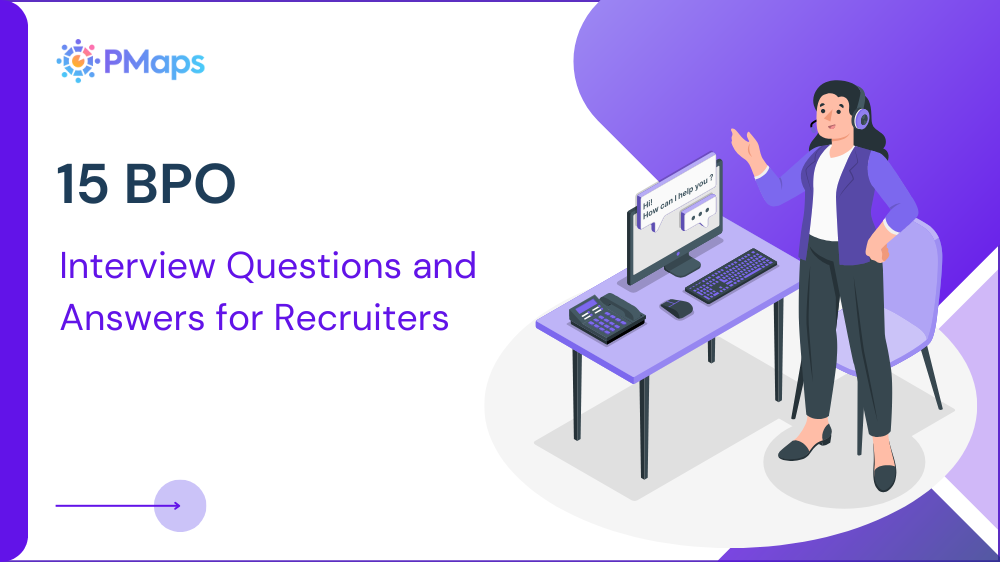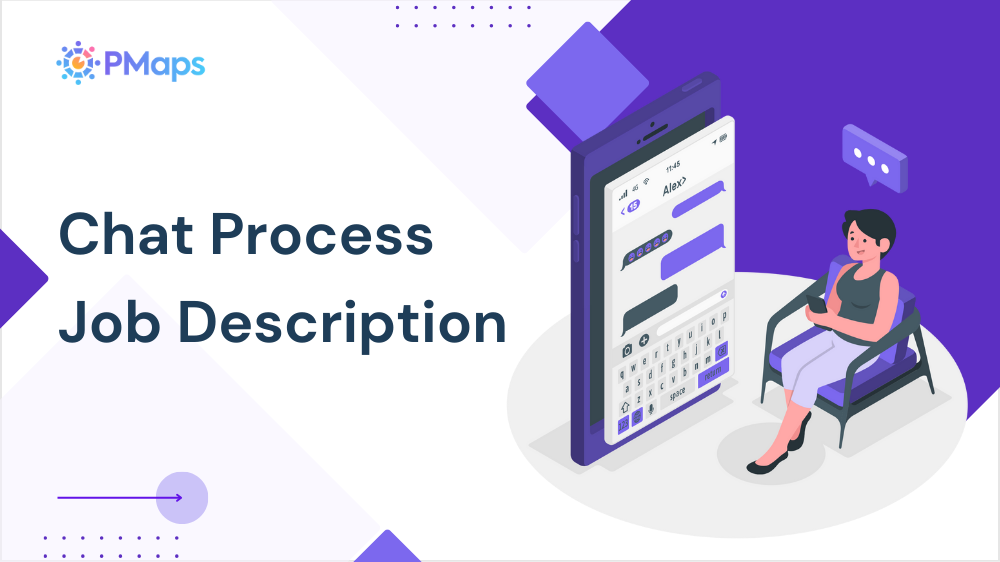
BPO interview questions help you evaluate composure, clarity, and process discipline across voice and non-voice roles. This guide follows your specified outline with tailored sub-sections for real screening use. You’ll find a clean flow per question: what it assesses, what to look for, and an ideal sample answer.
General Interview Questions to as in BPO Interview
Start broad to confirm motivation, communication basics, and awareness of BPO environments. These two questions set the tone for professionalism and coachability. Use them to warm up candidates before scenario and process checks, while noting fluency, listening habits, and confidence with high-volume, shift-based work.
1) Why do you want to work in BPO?
What it assesses
Role awareness, service mindset, and schedule readiness.
What to look for
Customer focus, learning appetite, comfort with shifts, and growth clarity.
Sample answer
“I enjoy solving problems and communicating clearly. BPO suits my pace tolerance and desire to learn across processes. I’m comfortable with shifts and targets, and I value feedback loops that help me improve conversation quality and resolution rates.”
2) How do you handle pressure during peak call/chat volumes?
What it assesses
Composure, prioritization, and accuracy at speed.
What to look for
Queue discipline, brief updates, template use, and handoff clarity.
Sample answer
“I breathe, triage by urgency, and use approved templates for quick wins. I set expectations, document accurately, and escalate with clean notes when needed. My goal is steady tone, first-time resolution, and zero rework.”
BPO Situational Judgement Interview
Situational prompts reveal real-time choices when policies, emotions, and SLAs collide. Listen for structured steps, brand-safe language, and ownership. Strong answers protect customer trust and document precisely, while keeping AHT and quality balanced in a live queue.
3) A customer is irate about repeated callbacks. What do you do first?
What it assesses
De-escalation, ownership, and resolution framing.
What to look for
Empathy, apology, summary of issue, and one-call resolution plan.
Sample answer
“I acknowledge the frustration, apologize for repeat contact, and summarize their history. I confirm the desired outcome, offer a concrete next step with a time commitment, and stay on the line to see it through or arrange a monitored callback.”
4) You discover an error after ending the interaction. Next steps?
What it assesses
Integrity, documentation hygiene, and SLA awareness.
What to look for
Immediate ticket update, supervisor alert, and corrective outreach if policy allows.
Sample answer
“I reopen the ticket, add a precise addendum, and notify my supervisor. If policy permits, I contact the customer with the fix and a brief confirmation. I also add a checklist note to prevent recurrence.”
Behavioral Interview Questions for BPO
Behavior questions surface steady habits built over many shifts. You’re looking for coachability, empathy, and reliable follow-through. Probe for STAR detail, measurable outcomes, and how they used feedback. Answers should show pattern changes that improved CSAT, FCR, or compliance scores.
5) Tell me about a time you turned a difficult call around.
What it assesses
Recovery skill and tone control.
What to look for
Active listening, short sentences, specific resolution, and clear close.
Sample answer
“The customer was upset about a billing error. I apologized, verified the charges, processed a correction, and explained the next statement. I stayed calm, checked understanding, and confirmed via email. They rated the interaction five stars.”
6) Describe a time feedback improved your performance.
What it assesses
Coachability and habit change.
What to look for
Specific feedback, action taken, and metric lift.
Sample answer
“My QA review flagged long openings. I shortened my greeting and used the brand script. AHT dropped by 22 seconds and CSAT improved the same month.”
7) Share a moment you supported a teammate under pressure.
What it assesses
Team ethos and knowledge sharing.
What to look for
Calm assist, quick tips, and queue awareness.
Sample answer
“I noticed a colleague stuck on refund policy. I sent the policy clip, offered the correct phrase, and took one chat from their queue. They closed successfully, and the queue stabilized.”
8) Tell me about handling policy pushback without escalation.
What it assesses
Boundary setting and empathy.
What to look for
Explain-confirm-offer format; no promises outside policy.
Sample answer
“I restated the policy, explained the reason, and offered the closest allowed option. I used calm language and checked if the alternative helped. The customer accepted store credit instead of a cash refund.”
9) Describe a time you learned a new process quickly.
What it assesses
Adaptability and self-learning.
What to look for
Playbook use, shadowing, and documented notes.
Sample answer
“We added a warranty flow. I read the SOP, shadowed two calls, and wrote a one-page cheat sheet. My first-contact resolution reached team average within a week.”
Technical/Functional Interview
These checks verify process fluency and role readiness. Split them by voice, non-voice, and team leader focus to mirror BPO tracks. Look for policy-safe phrasing, ticket hygiene, and metrics literacy. Strong answers pair method with examples and reference SOPs or QA rubrics.
Voice Process BPO Interview Questions
10) How do you keep tone consistent during tough calls?
What it assesses
Vocal control and empathy scripting.
What to look for
Pace control, short sentences, and clear confirmations.
Sample answer
“I slow my pace, use neutral words, and summarize often. I avoid filler and confirm next steps before hold or transfer. My aim is calm progress, not speed alone.”
11) Walk me through a clean transfer to Tier-2
What it assesses
Handoff quality and customer continuity.
What to look for
Warm transfer, concise case summary, and expectation setting.
Sample answer
“I brief the specialist with account, issue, actions tried, and pending step. I tell the customer the purpose and estimated time. I stay until both sides engage, then close politely.”
Non-Voice Process BPO Interview Questions
12) How do you manage multiple chats without losing accuracy?
What it assesses
Multitasking and written clarity.
What to look for
Prioritization, templates, and proofread habit.
Sample answer
“I cap concurrent chats based on complexity, use approved snippets, and re-read before sending. I tag complex cases for focused attention and keep notes clean for handovers.”
13) What is your email etiquette for sensitive issues?
What it assesses
Written tone and compliance.
What to look for
Clear subject, brief body, redaction, and action bullets.
Sample answer
“I use a precise subject, short paragraphs, and numbered steps. I redact personal data, cite the ticket ID, and confirm the expected action and timeline.”
BPO Team Leader Interview Questions
14) How do you balance AHT with quality?
What it assesses
Metric trade-offs and coaching.
What to look for
Queue analytics, QA themes, and targeted coaching plans.
Sample answer
“I review interval reports and QA comments, then coach one behavior at a time. We trim dead air, protect compliance, and track deltas weekly. Improvements stick when changes are small and measured.”
15) Describe your approach to coaching low performers.
What it assesses
Performance management and empathy.
What to look for
Root-cause check, micro-goals, and follow-ups.
Sample answer
“I listen to three calls, spot one pattern, and set a micro-goal for the week. I model the phrase, observe live, and give quick feedback. We review numbers together and adjust.”
Pro Tips for Interviewing BPO Candidates
Short, realistic tasks reveal habits better than long chats. Simulate the floor with light time pressure. Score for clarity, compliance, and closure. Pair behavioral interviews with a standardized test that reduces guesswork and bias across shifts, and align role scope with a clean BPO job description.
- Run a three-minute de-escalation role-play with a policy limit.
- Time a mock transfer: expect a crisp, 30-second case summary.
- Have candidates rewrite a vague email into a clear, two-paragraph reply.
- Ask for two compliant alternatives when the policy says “no.”
- Review a short call note: expect ticket ID, action taken, and next step.
Conclusion
Hire for calm language, clean notes, and policy-safe decisions. Use this set to assess judgment under pressure and protect both CSAT and compliance. For standardized screening, try our BPO test or refine roles using a tailored BPO job description. Call 8591320212 or email assessment@pmaps.in.









